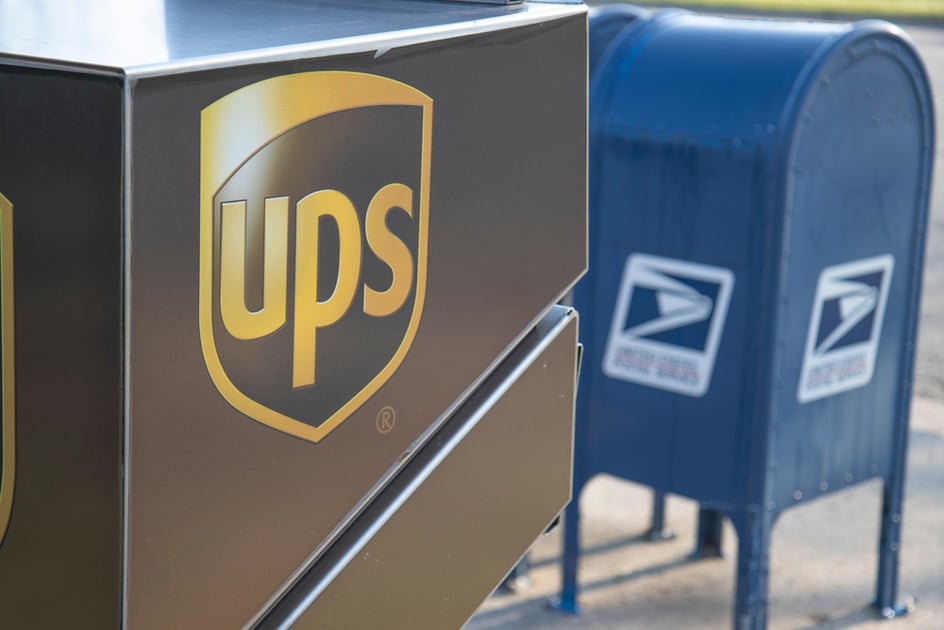UPS vs USPS - An In-Depth Comparison
February 27, 2024 •Deyman Doolittle

In the world of logistics, every cost, delivery time, and service option can significantly affect the bottom line of a business. United Parcel Service (UPS) and the United States Postal Service (USPS) are two giants in the shipping industry, with each offering distinct advantages that can impact businesses. By comparing UPS and USPS on key factors such as rates, international shipping, speed, and tracking, businesses can make more informed decisions and possibly reduce their shipping costs. This comparison will serve as a guide to recognizing where cost efficiencies and service quality can be optimized for various shipping needs.
Rates: A Comparison
Selecting a carrier often begins with an analysis of pricing. UPS and USPS offer competitive rates that vary by package weight, destination, and service level. Typically, USPS is known for providing more economical solutions for lightweight packages, especially those that fit within its flat-rate shipping options. In contrast, UPS may offer more competitive rates for heavier packages and is known for its extensive range of value-added services which may justify a higher price tag.
To understand the pricing differences, consider how each carrier structures their rates. UPS often includes a wider range of services in its base costs, while USPS generally presents lower base rates with additional fees for supplementary services. Businesses should weigh these factors along with the value of each service to uncover the potential for cost savings in different scenarios.
International Shipping: UPS vs. USPS
The global marketplace demands reliable international shipping options. Both UPS and USPS provide extensive international services with varying rates, delivery times, and levels of tracking.
UPS typically shines in robust tracking and expedient, reliable delivery times. However, these come at a higher cost, which might be justified for businesses needing guaranteed service and detailed shipment visibility. Meanwhile, USPS offers economical pricing for international shipments, which can sometimes result in longer transit times. Deciding between UPS and USPS for international shipping will depend heavily on the importance of cost versus speed and tracking precision.
Speed: UPS vs. USPS
When assessing delivery speed, both carriers offer rapid services, yet the perceived speed of each can differ. UPS Ground and USPS Priority Mail are commonly compared services.
UPS Ground is generally favored when shipping heavy items over long distances, where its network and logistics yield a consistent service. USPS, while having a strong presence for last-mile delivery due to its government-operated structure, is seen as less predictable, which may affect its perceived speed. However, USPS Priority Mail can outpace UPS Ground for lightweight packages over shorter distances. Dissecting the common perceptions and reality of each service is key in choosing the provider that aligns best with time-sensitive shipping needs.
Tracking: UPS vs. USPS
In today's day and age, tracking is not just an option; it's a necessity. Both UPS and USPS offer tracking features, but the sophistication and user experience can vary.
UPS often leads in tracking innovation, with detailed, near-real-time updates and comprehensive delivery notifications. The ease of use and reliability of their tracking system usually result in high customer satisfaction. USPS has improved their tracking capabilities over time, but tracking updates may lack the granularity provided by private carriers like UPS, potentially affecting tracking satisfaction.
Customer Preferences: Why People Choose UPS over USPS
Customer preferences can stem from several factors, including service reliability, coverage, and the availability of additional offerings like insurance and logistics support. Typically seen as a more comprehensive service provider, UPS often secures customer loyalty through guaranteed services, extensive tracking, and assured delivery windows. Additionally, some customers prefer the convenience of UPS’s door-to-door service over the USPS’s reliance on P.O. Boxes for certain deliveries.
Market segmentation further informs these preferences, with high-value business shippers favoring UPS's breadth of services while cost-conscious consumers may lean towards the attractive rates of USPS.
Cost Comparison: 20 lb Package - UPS vs. USPS
Let's consider the cost of shipping a standard 20 lb package. UPS's rates would factor in pre-negotiated contracts, distance, and surcharges like fuel, while USPS pricing would be largely influenced by the choice between flat-rate options and distance-based pricing.
For a domestic shipment, UPS may include additional fees for residential delivery or Saturday service, but its tracking and delivery guarantees could justify the cost. USPS may offer lower rates, but values like insurance and speed might incur extra fees. Businesses must compare the all-in cost to determine which option garners savings without compromising required services.
USPS vs. UPS Ground: Speed Comparison
The battle of speed between USPS Priority Mail and UPS Ground often comes down to the specifics of the shipment. USPS boasts a 1-3 day delivery estimate for Priority Mail, enticing customers who prioritize rapid delivery, while UPS Ground typically requires anywhere from one to five business days based on distance.
Factors such as drop-off times, weather, and network efficiency of each carrier will influence the actual delivery times. Still, misconceptions endure, like assuming USPS will always be slower for heavier packages, a claim which is not necessarily true in all geographic scenarios.
Navigate Your Shipping Strategy with ShipSigma
Deciphering the complex offerings of UPS and USPS reveals diverse services tailored to varied needs. For businesses interested in reducing their shipping costs, understanding these differences is crucial. The key lies in matching shipping requirements—be it cost, speed, tracking, or international reach—to the strengths of each carrier. Empowered with this knowledge, businesses can employ a strategic approach to shipping decisions, ensuring they leverage the best of what UPS and USPS have to offer.
In the dynamic landscape of logistics, firms like ShipSigma provide valuable insights and assistance, helping businesses to navigate these choices with greater clarity and confidence. With a keen understanding of shipping solutions, businesses can turn the routine task of sending a package into a strategic advantage.

